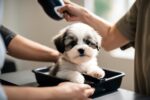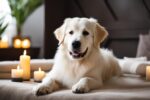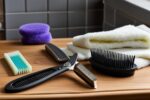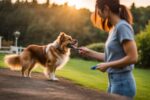Polite Pups: Understanding Dog Grooming Etiquette
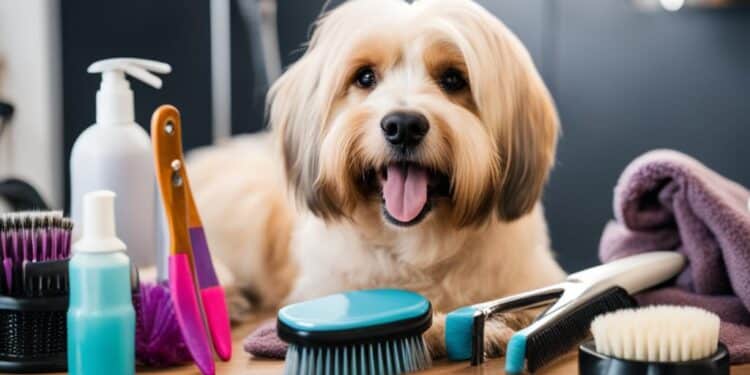
Dog grooming is an essential part of keeping your furry friend healthy and happy, but it’s not just about hygiene. It’s equally important to understand and practice dog grooming etiquette. This goes beyond basic grooming manners and involves adopting proper behavior during grooming sessions. Dog grooming etiquette is key to ensuring a positive experience for both dogs and groomers and maintaining mutual respect and cooperation. In this section, we’ll introduce the concept of Dog Grooming Etiquette and explain its importance.
Why Dog Grooming Etiquette Matters
Proper behavior during grooming is essential to ensure a positive experience for both dogs and groomers. Grooming manners that reflect mutual respect and cooperation contribute to the overall well-being of the dog and improve the effectiveness of the grooming process.
By following dog grooming etiquette, you can help make grooming less stressful, more efficient, and safer for your dog. Additionally, good etiquette can make for a more pleasant and productive experience for both you and the groomer.
For example, grooming manners such as using a calm and patient approach, providing plenty of positive reinforcement, and respecting the dog’s boundaries can help maintain a calm and relaxed environment during the grooming session. Good communication with your groomer and regular preparation of your dog for the session also go a long way in ensuring a positive experience.
Complying with grooming manners not only makes it easier for the groomer to do their job but can also build trust and a respectful relationship between you, your dog, and the groomer. By making dog grooming etiquette a priority, you will be taking an important step towards promoting the physical and emotional health of your dog.
Preparing Your Dog for the Grooming Session
Proper preparation is key to ensuring a positive experience for your dog during a grooming session. By following a few simple guidelines, you can help familiarize your dog with the process and create a calm and comfortable environment.
Introducing your dog to the groomer
When introducing your dog to a new groomer, it’s essential to keep interactions friendly and impartial. Allow your dog to sniff the new environment and become acclimated to the sounds and smells of the grooming salon before beginning the grooming process. If your dog is timid or anxious, ask the groomer to approach slowly and gently to avoid overwhelming your dog.
Familiarizing your dog with the grooming routine
To ensure that your dog is comfortable with the grooming process, it’s essential to introduce them to the various grooming tools and procedures in a positive and controlled environment. Start with brief, simple grooming sessions, gradually increasing the length and complexity of the sessions as your dog becomes more comfortable. Offer treats and positive reinforcement throughout the process to build a positive association with grooming.
Ensuring a calm and relaxed state of mind
Before a grooming session, it’s crucial to ensure that your dog is in a calm and relaxed state of mind. Take your dog for a walk or engage in some light physical activity beforehand to help release excess energy and nervousness. Avoid feeding your dog for at least an hour before the grooming session to prevent an upset stomach.
| Grooming Manners | Canine Spa Etiquette |
|---|---|
| – Introduce your dog to the groomer slowly and calmly – Familiarize your dog with the grooming routine in a positive environment – Ensure your dog is relaxed before starting the session |
– Allow your dog to become acclimated to the grooming environment – Encourage positive associations with grooming tools and procedures – Take steps to prevent an upset stomach before the session |
By following these simple guidelines, you can help ensure a positive grooming experience for your dog, promoting their overall well-being and comfort, and fostering strong relationships with your groomer.
Communication with Your Groomer
Clear communication with your groomer is key to a successful grooming experience for your dog, as it ensures that all parties are on the same page. You should communicate your preferences, concerns, and any specific instructions for the groomer before the grooming session.
During the grooming session, you should pay attention to your groomer’s behavior and follow their instructions. This will show that you respect their expertise and contribute to creating a harmonious environment for your dog.
Effective Communication Tips:
- Be respectful: Communicate with your groomer in a polite and respectful manner to establish a positive relationship.
- Be specific: Clearly communicate your preferences and instructions to avoid confusion and ensure the best results.
- Be honest: Share any concerns you may have with your groomer to address them promptly and ensure a comfortable experience for your dog.
- Listen actively: Pay attention to your groomer’s instructions, and ask for clarifications if needed. This will reduce the risk of misunderstandings and ensure that your dog receives the best care possible.
Remember that dog grooming etiquette is about creating a respectful and comfortable environment for everyone involved in the grooming session. By effectively communicating with your groomer, you can contribute to your dog’s well-being and enhance the grooming experience for all.
Leash and Handling Etiquette
Proper handling of dogs during grooming is crucial to ensure a positive experience for both the dog and groomer. Using leashes correctly is an essential part of this. It is recommended that dogs are always kept on a leash during grooming sessions to prevent them from running amok and potentially getting injured or causing damage to equipment.
When using a leash, be sure to use a properly fitted collar or harness, and handle it with care to avoid injuring your dog’s neck. Always hold the leash firmly but gently, with enough slack to allow your dog to move comfortably, but not enough for them to pull away.
To maintain Canine spa etiquette, always communicate with your groomer about any habits your dog has or any specific behavior concerns. This will allow the professional to handle your pet best and give them the best possible care.
Tip: Even if your dog is generally calm and well-behaved, grooming can be a stressful experience. It’s always a good idea to introduce your dog to the groomer and the surroundings before their first grooming session. This will allow them to feel more comfortable and help prevent any issues that could arise from fear or anxiety.
Here is a table summarizing proper leash and handling etiquette during grooming sessions:
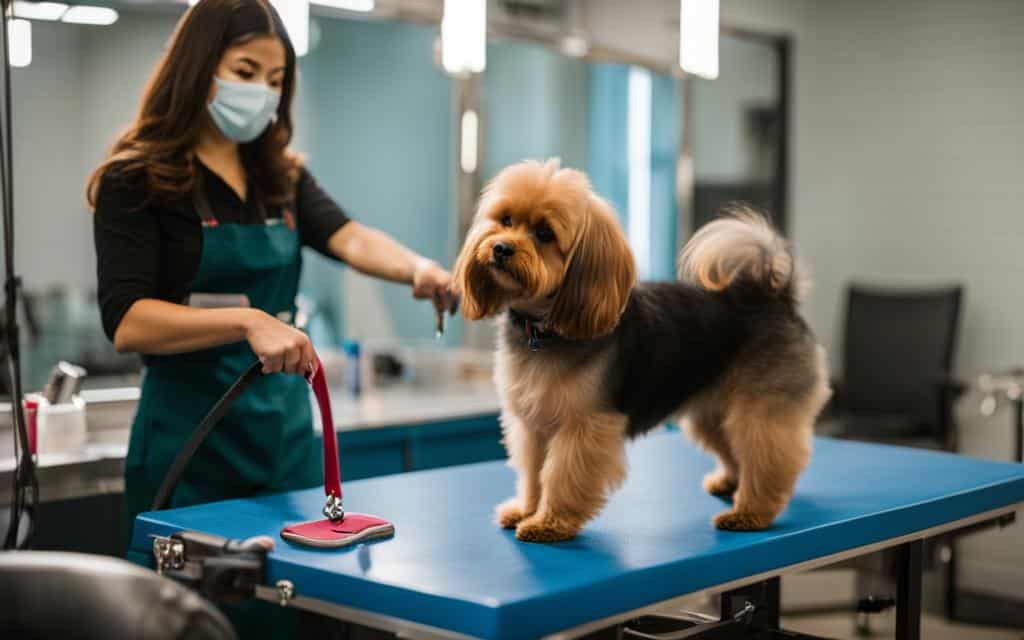
| Leash and Handling Etiquette | Do’s | Don’ts |
|---|---|---|
| Use a properly fitted collar or harness | Make sure the collar or harness is secure | Use a collar that is too tight |
| Hold the leash firmly but gently | Allow enough slack for the dog to move comfortably | Hold the leash too tight |
| Communicate with your groomer | Share any concerns or preferences with your groomer | Assume your groomer knows your dog’s behavior |
Following these leash and handling etiquette guidelines will not only ensure a positive grooming experience but also contribute to your dog’s overall well-being and happiness.
Bathing and Drying Etiquette
In order to ensure a successful and stress-free grooming session for your dog, it is important to follow proper bathing and drying etiquette.
First, make sure to use warm water and a dog-friendly shampoo to avoid any skin irritations. Avoid getting water or soap in your dog’s eyes, nose, or ears by covering them with a washcloth when necessary.
Once your dog is clean, it’s time to dry them off. Use a towel to gently pat them dry, avoiding any rough rubbing that could cause discomfort. If using a blow dryer, set it to low heat and hold it a safe distance away from your dog’s skin to prevent burning. Make sure to brush their hair while drying to avoid any tangles or matting.
Remember to maintain a calm and gentle demeanor throughout the bathing and drying process, using positive reinforcement to reward good behavior. By following these grooming manners and proper behavior during grooming, your dog will feel more comfortable and relaxed during their grooming session.
Nail Trimming and Paw Care Etiquette
Proper handling during nail trimming and paw care is essential for maintaining a stress-free grooming experience for your dog. As part of canine spa etiquette and grooming manners, it is important to ensure that your furry friend is comfortable and relaxed throughout the process.
Tip: If your dog is nervous or resistant during nail trimming, consider gradually introducing them to the process by touching their paws and nails frequently between grooming sessions.
During the grooming session, communicate with the groomer to ensure that the techniques used are in line with your dog’s individual needs and preferences. Avoid rushing the process or applying excessive force, as this can cause physical discomfort and emotional distress.
| Qualities | Description |
|---|---|
| Gentle handling | Use gentle and patient techniques to ensure that your dog is not frightened or hurt during the process. |
| Regular maintenance | Make nail trimming and paw care a regular part of your dog’s grooming routine to help them become comfortable and familiar with the process. |
| Professional assistance | If you are not confident in your ability to perform these tasks safely and effectively, seek the assistance of a professional groomer. |
By following the proper nail trimming and paw care etiquette, you can help ensure that your dog remains happy, healthy, and comfortable during the grooming process.
Brushing and Grooming Tools Etiquette
Proper use of grooming tools and brushes is key to maintaining the health and appearance of your dog’s coat. In addition to regular maintenance, following grooming etiquette is important in keeping your furry friend comfortable and relaxed during grooming sessions.
When selecting the appropriate grooming tool for your dog’s coat type, consider the size and length of the hair and any special needs your dog may have, such as sensitive skin or matted fur. Always test the tool on a small area of the coat before using it on the whole body to ensure your dog’s comfort. Use a soft-bristled brush to avoid scratching your dog’s skin and brush gently to prevent coat damage.
Regular cleaning and maintenance of grooming tools is essential in keeping them hygienic and sharp. Use a disinfectant solution to clean combs and scissors, and replace any worn-out or damaged tools promptly. Remember to keep grooming tools out of your dog’s reach to avoid injury.
During grooming sessions, always be mindful of your dog’s body language and comfort level. If your dog appears distressed or uncomfortable, take a break and revisit the grooming process later. Offer treats and positive reinforcement to help your dog associate grooming with a positive experience.
Grooming Tools Checklist
- Soft-bristled brush
- Fine comb
- Slicker brush
- Nail clippers
- Scissors
- Dematting tool
- Thinning shears
Dental Care Etiquette
Proper dental care is an essential part of dog grooming. It not only helps maintain good oral hygiene but also prevents certain diseases and keeps your pet happy and comfortable. Here are some tips for introducing dental care during grooming sessions:
1. Start slow
Introduce your dog to dental care gradually, and make it a positive experience. Start by lifting the dog’s lip and gently touching their teeth and gums with your fingers. Reward them with praise and a treat, and slowly work your way up to using a toothbrush.
2. Use dog-friendly toothpaste and toothbrush
Human toothpaste can be harmful to dogs, so use a dog-friendly toothpaste that is specifically made for pets. Also, use a soft-bristled toothbrush designed for dogs and never use a human toothbrush.
3. Choose the right time
Choose a quiet time when your dog is relaxed and in a good mood for dental care. It can be before or after a grooming session, so your dog is already in a calm state and receptive to being handled.
4. Be gentle
Be gentle while brushing and avoid any sudden movements that can startle your dog. Start from the back teeth and work your way to the front in circular motions. Be patient and take breaks if your dog gets agitated.
5. Reward your dog
End the dental care session on a positive note by giving your dog a treat and a lot of praise. This will make your dog associate dental care with good things and make future sessions more comfortable for them.
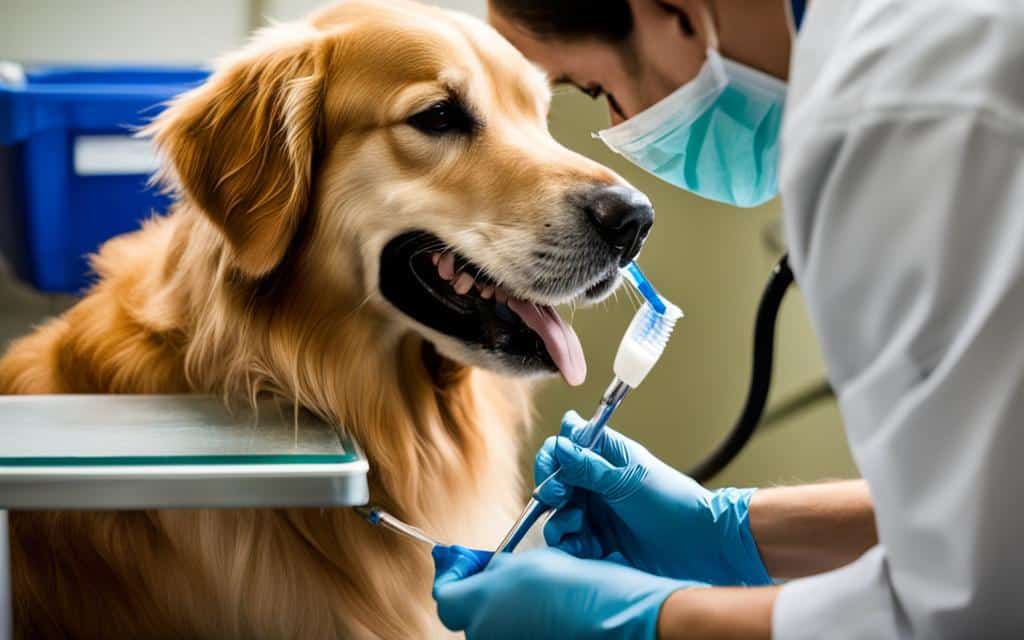
“Dental care is an important aspect of dog grooming, and introducing it slowly and gently can make it a positive experience for your dog.”
Dealing with Difficult Dogs
Proper behavior during grooming is crucial to ensure a safe and respectful environment for both dogs and groomers. However, some dogs can be difficult or aggressive, and handling them requires special attention and care. Here are some grooming manners to follow when dealing with difficult dogs:
- First, ensure your own safety by using proper handling techniques and avoiding sudden movements or actions that may provoke the dog.
- Approach the dog calmly and with confidence, speaking in a soothing tone to help reduce their anxiety.
- Be patient and take breaks if needed, allowing the dog to relax before continuing with grooming procedures.
- Use positive reinforcement techniques, such as offering treats and praise, to encourage good behavior and cooperation.
- Consider using muzzles or other safety equipment if necessary, but only after consulting with a veterinarian or professional dog trainer.
Keep in mind that every dog is unique, and what works for one may not work for another. Always prioritize the well-being and safety of both the dog and the groomer, and be prepared to adjust your approach as needed.
Tips for a Positive Grooming Experience
Ensuring a positive grooming experience for your dog requires observing proper canine spa etiquette and grooming manners while interacting with your groomer. Here are some additional tips to keep in mind:
Arrive on Time
Arriving late to a grooming session could disrupt the groomer’s schedule and cause delays for other clients. Aim to arrive on time, or even a few minutes early, to allow your dog adequate time to settle in before the session begins.
Bring Necessary Items
Before the grooming session, find out which items you need to bring, such as vaccination records, leashes, or muzzles. By having everything prepared beforehand, you can streamline the process and make it easier for your groomer to perform their duties.
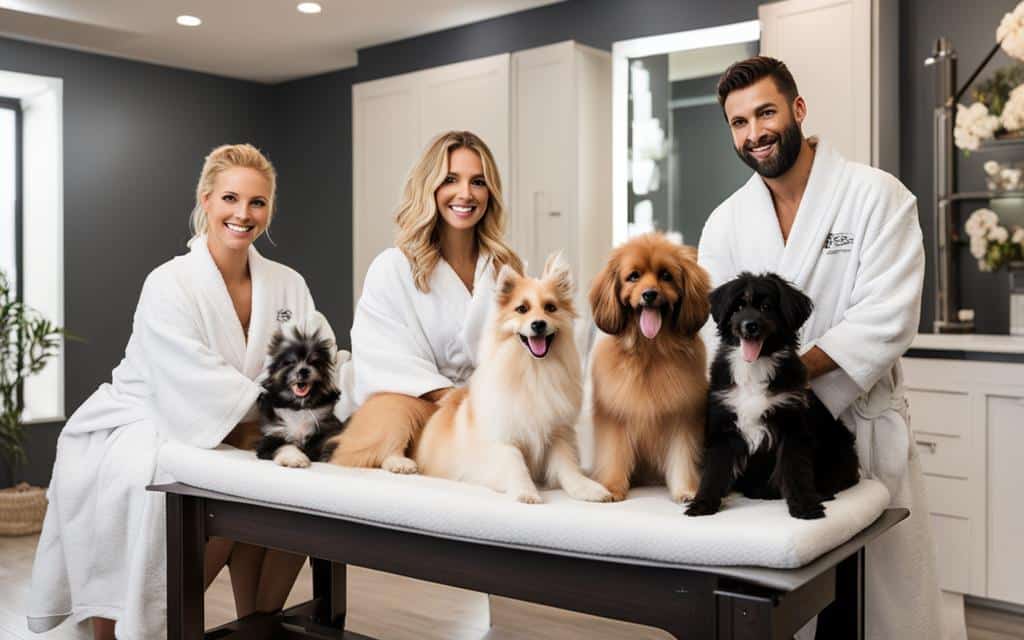
Communicate Your Expectations
Be sure to communicate your expectations with your groomer, such as the type of haircut you want or any specific preferences or concerns you have regarding your dog’s grooming. This can help avoid misunderstandings and ensure that both you and your groomer are on the same page.
Show Appreciation
If you’re satisfied with the grooming session, don’t hesitate to show your appreciation to your groomer. A simple “thank you” or a positive review can go a long way in building a good relationship with your groomer and promoting mutual respect and cooperation.
Be Prepared for Post-Grooming Care
After the grooming session, your dog may need some post-grooming care, such as avoiding certain activities or medications. Ask your groomer for advice and follow their recommendations to ensure that your dog remains comfortable and healthy after the grooming session.
By following these tips and practicing proper canine spa etiquette and grooming manners, you can help ensure a positive grooming experience for both your furry friend and your groomer.
Conclusion
Proper dog grooming etiquette is not just a matter of good manners; it is essential to maintain a healthy and harmonious environment during grooming sessions. By following the guidelines outlined in this article, dog owners can help ensure a positive grooming experience for both their dogs and their groomers.
Remember to prepare your dog for grooming sessions, communicate clearly with your groomer, and always use gentle handling techniques. Additionally, it is essential to maintain good oral hygiene and care for your dog’s paws and nails. By following these tips and practicing good grooming manners, you can help foster a respectful and cooperative relationship with your dog’s groomer.
We hope this article has been informative and helpful in your quest for understanding proper dog grooming etiquette. By implementing these guidelines, you can ensure that your dog receives the best possible grooming care while promoting a happy and healthy lifestyle for your furry friend.
FAQ
What is dog grooming etiquette?
Dog grooming etiquette refers to the proper manners and behavior expected from both dog owners and groomers during grooming sessions. It includes aspects such as respect for the dog’s comfort, clear communication, proper handling, and maintaining a calm and relaxing environment.
Why is dog grooming etiquette important?
Dog grooming etiquette is important for multiple reasons. It ensures the well-being and safety of the dog during the grooming process, creates a positive experience for both the dog and the groomer, and promotes a harmonious atmosphere in the grooming salon. Additionally, following proper etiquette allows for effective communication between the dog owner and groomer, resulting in desired grooming outcomes.
How can I prepare my dog for a grooming session?
To prepare your dog for a grooming session, it is recommended to introduce them to the grooming routine from a young age. Familiarize them with grooming tools, such as brushes and clippers, and gradually increase their comfort level through positive reinforcement. Additionally, ensure your dog is well-exercised and in a calm state of mind before the grooming appointment.
How should I communicate with my groomer?
Effective communication with your groomer is essential. Discuss your preferences and expectations for the grooming session, including haircut length, specific areas to focus on, and any concerns you may have. Clear communication helps the groomer understand your desires and ensures they can provide the best care for your dog.
What is the proper leash and handling etiquette during grooming?
Proper leash and handling etiquette involves using a leash that allows for control without causing discomfort or strain to the dog. The leash should be kept loose to avoid tension. When handling the dog, it is important to be gentle, respectful, and mindful of the dog’s body language to prevent any unnecessary stress or discomfort.
What should I consider during the bathing and drying process?
During bathing and drying, it is important to maintain a calm and comfortable environment for the dog. Use appropriate temperature water and gentle, dog-safe shampoos. Ensure thorough rinsing to avoid any skin irritations. When drying, use a towel or low-heat dryer and be mindful of the dog’s tolerance for noise and sensations.
How should I approach nail trimming and paw care?
Nail trimming and paw care should be approached with patience and a gentle touch. Make sure to use proper nail clippers or grinders to avoid injury. If your dog is uncomfortable with paw handling, desensitize them gradually through positive reinforcement. Always be mindful of the dog’s comfort and check for any signs of distress during the process.
What is the proper etiquette for using grooming tools and brushes?
When using grooming tools and brushes, maintain a gentle touch to ensure the dog’s comfort. Brush in the direction of hair growth and be cautious when encountering tangles or mats. Regularly clean and sanitize grooming tools, and replace any worn-out or damaged items to provide the best grooming experience for your dog.
How can I practice dental care etiquette during grooming?
Dental care during grooming sessions can be practiced by introducing and gradually acclimating your dog to tooth brushing. Use dog-friendly toothpaste and a soft toothbrush, and provide positive reinforcement. Regularly check your dog’s teeth and gums for any signs of dental issues and consult with your veterinarian for professional dental care, if needed.
How can I handle difficult dogs during grooming?
Handling difficult dogs during grooming requires patience, understanding, and the use of appropriate techniques. Calming methods, such as positive reinforcement and desensitization, can help alleviate anxiety or aggression. If necessary, consult with professional trainers or behaviorists for guidance on handling and managing challenging behaviors.
What are some tips for a positive grooming experience?
To ensure a positive grooming experience, make sure your dog is properly socialized and comfortable being handled. Regularly groom your dog at home to maintain their coat between professional sessions. Prioritize grooming appointments during less stressful times of the day and reward your dog with treats or praise for their cooperation.
